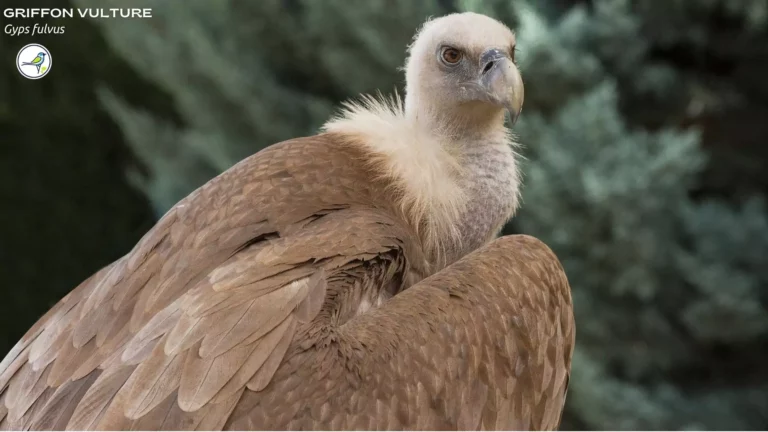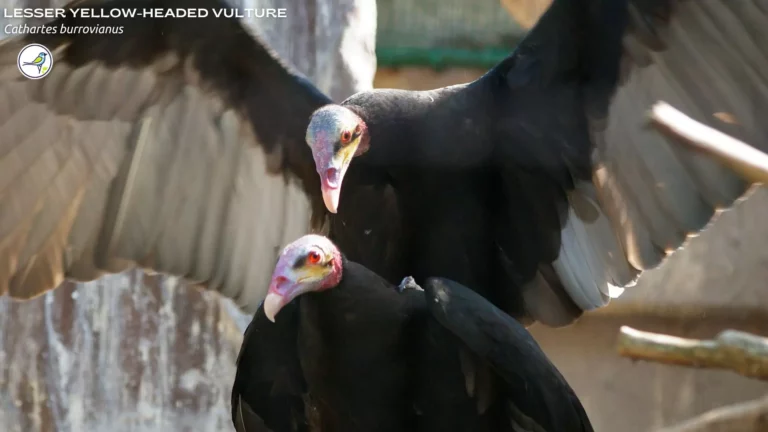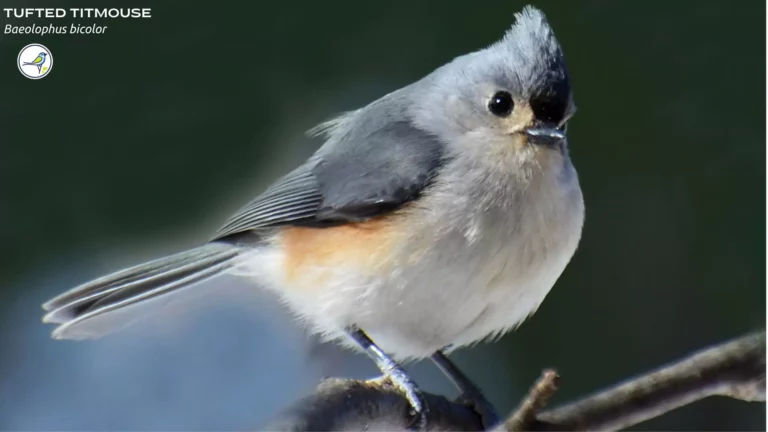How to identify Male and Female Love Birds?
Welcome to our comprehensive guide on how to accurately identify the gender of your beloved love birds. For enthusiasts and bird lovers, understanding the gender of these charming creatures can deepen the bond and enhance their care. In this post, we’ll delve into various methods and cues that will help you determine whether your love bird is a male or female.
Throughout this guide, we’ll explore various methods for determining your love birds’ gender, including physical characteristics, behavioral cues, age-related factors, the pelvic bone method, and DNA testing. By the end, you’ll be well-equipped to confidently identify whether your love birds are male or female and provide them with the best possible care.
So, let’s embark on this exciting journey of discovery, and unlock the secrets behind the gender of your charming feathered friends.
Why Identify Gender?
Understanding the gender of your love birds is not just a matter of curiosity; it’s a fundamental aspect of responsible pet ownership and bird care. Let’s delve into the compelling reasons why identifying the gender of your love birds matters:
1. Behavior and Companionship: Love birds are known for their unique behaviors and interactions. However, these behaviors can vary significantly between males and females. By identifying the gender of your love birds, you can:
2. Promote Harmony: Males and females may have different social dynamics. Recognizing their gender allows you to pair them appropriately, reducing the risk of conflicts or aggression.
3. Fulfill Social Needs: Some love birds thrive on social interactions. Knowing the gender can help you ensure they have a suitable companion for mutual enjoyment.
4. Breeding and Reproduction: If you’re considering breeding love birds, gender identification is paramount. Successful breeding relies on compatible pairs. Here’s why it’s crucial:
5. Pairing Compatibility: Mixing males and females is a fundamental consideration in breeding. Identifying the gender helps you form compatible breeding pairs, enhancing the chances of successful reproduction.
6. Avoiding Inbreeding: Breeding unrelated love birds reduces the risk of genetic issues in offspring, and accurate gender identification is essential for this purpose.
7. General Care and Health: Even if breeding isn’t your goal, understanding your love birds’ gender can positively impact their general care and well-being:
8. Addressing Gender-Specific Needs: Certain gender-related behaviors and health concerns may arise. Males may be more prone to territorial behaviors, while females might require special care during nesting. Knowing their gender allows you to address these needs effectively.
9. Health Monitoring: Regularly identifying your love birds’ gender as they grow can help you track their overall health and development, ensuring any potential issues are addressed promptly.
In summary, identifying the gender of your love birds goes beyond mere curiosity. It empowers you to provide appropriate care, maintain harmonious companionship, and make informed decisions about breeding. Throughout this guide, we’ll explore various methods to accurately determine whether your love birds are male or female. By the end, you’ll be equipped with the knowledge needed to nurture and enjoy your feathered friends to the fullest.
Physical Characteristics of Love Birds
When it comes to identifying the gender of love birds, paying close attention to their physical characteristics can be a valuable tool. Male and female love birds often exhibit distinct traits and features that can help you determine their gender. Let’s explore these physical differences in detail:
1. Size and Body Shape:
- Males: Typically, male love birds are slightly larger than their female counterparts. This difference in size may not be immediately noticeable, but over time, you can observe variations in their overall body dimensions.
- Females: Female love birds tend to be slightly smaller and more compact in body shape. They may appear daintier compared to males.
2. Plumage and Coloration:
- Males: Male love birds often boast more vibrant and striking plumage. They may exhibit brighter colors and bolder patterns on their feathers, especially around their face and chest.
- Females: Female love birds, on the other hand, tend to have subtler colors and patterns. Their plumage may appear softer and less intense compared to males.
3. Cere Color: The cere is the area just above the beak, and its color can be a reliable indicator of gender, though it varies by love bird species.
- In Some Species: In certain species, such as the budgerigar, the cere color can help determine gender. In these cases, males typically have a more vibrant and bright blue cere, while females may display a tan or brownish cere.
- In Other Species: However, it’s essential to note that cere color is not a universal indicator across all love bird species. In some species, both males and females may have cere colors that appear similar, making it less reliable for gender identification.
4. Behavior in Mating Pairs:
- Courtship Behavior: Observing the behavior of love birds within mating pairs can provide valuable clues about their gender. Males may engage in courtship behaviors, such as displaying their feathers and singing, to attract females.
- Nesting Behavior: Females, when in a suitable environment, may exhibit nesting behavior, which includes shredding paper or other materials to create a nest.
It’s important to remember that while these physical characteristics can offer insights into your love birds’ gender, they may not be foolproof, as there can be variations among individual birds and species. Therefore, it’s recommended to combine physical observations with other methods, such as DNA testing or the pelvic bone method, for more accurate gender identification.
In the subsequent sections of this guide, we’ll explore additional methods and cues to help you confidently determine whether your love birds are male or female.
Behavioral Cues for Identifying Love Bird Gender
While physical characteristics provide essential clues, observing the behavior of your love birds can offer valuable insights into their gender. Love birds, like many other bird species, exhibit distinct behavioral cues that may help you identify whether they are male or female. Let’s explore these behavioral differences in detail:
1. Courtship Behavior:
- Males: Male love birds are often the initiators of courtship behavior. They may engage in elaborate displays to woo potential mates. These displays can include puffing up their feathers, dancing, and performing melodious songs or chirps. Such courtship behaviors are a common hallmark of male love birds.
- Females: While females may respond positively to courtship advances, they are generally less likely to initiate these behaviors. Instead, they may show their interest by becoming more receptive to the male’s advances, allowing him to display his courtship rituals.
2. Vocalizations:
- Males: Male love birds are often more vocal and outgoing. They may sing, chirp, or vocalize more frequently than females. Their vocalizations are often part of their courtship displays and are used to attract potential mates.
- Females: Female love birds tend to be quieter in comparison. While they do vocalize, their calls may be less frequent and less elaborate than those of males. They may vocalize more during nesting or when communicating with their mate.
3. Territorial Behavior:
- Males: Male love birds can be territorial, especially when it comes to protecting their mate and nesting area. They may become more assertive and protective, displaying territorial aggression if they perceive a threat to their territory or partner.
- Females: While females may also exhibit territorial behavior, it is generally less pronounced than in males. They may actively participate in nest building and defend their nest, but their approach is typically less aggressive.
4. Nesting Behavior:
- Males: While males may assist with nest-building, their involvement is usually less extensive. They may support the female by providing materials or guarding the nest but typically take on a secondary role in nesting activities.
- Females: Female love birds often take on the primary role in nest building. They are responsible for gathering nesting materials and arranging them within the nest. Their interest in nesting behavior is a clear indication of their gender, especially when they are preparing to lay eggs.
Understanding these behavioral cues can be a helpful complement to other methods for identifying the gender of your love birds. Keep in mind that individual variations and species-specific traits may influence behavior, so it’s essential to combine behavioral observations with physical characteristics and other methods like DNA testing for the most accurate determination of your love birds’ gender.
In the following sections, we will explore additional methods and techniques that can aid in confidently identifying whether your love birds are male or female.
Age and Maturity in Love Birds
Age and maturity play a significant role in the identification of love bird gender. As these charming avian companions grow, certain physical and behavioral characteristics become more apparent, aiding in gender determination. In this section, we’ll explore how age-related factors can help you identify whether your love birds are male or female:
1. Juvenile vs. Adult Characteristics:
- Juvenile Love Birds: When love birds are young, it can be challenging to distinguish their gender, as they exhibit few of the adult-specific traits. In juvenile love birds, the physical differences between males and females are less pronounced.
- Adult Love Birds: As love birds mature into adulthood, gender-specific characteristics become more evident. These changes typically become noticeable at around 6 to 12 months of age, depending on the species.
2. Molt Patterns:
- Males: Adult male love birds may undergo molting patterns that result in brighter and more vibrant plumage. During molting, their feathers may appear more colorful, enhancing their overall appearance.
- Females: Female love birds may also experience molting, but their plumage tends to remain subtler in coloration. The differences in molt patterns can become more apparent as they mature.
3. Behavioral Changes:
- Males: As male love birds reach maturity, their courtship behaviors become more pronounced. They may engage in elaborate courtship rituals, such as singing and displaying their plumage, to attract females.
- Females: Female love birds may exhibit increased interest in nesting behaviors as they mature. This includes gathering nesting materials and preparing for potential egg-laying.
4. Eye Rings and Cere Changes:
- Cere Color: Some love bird species exhibit changes in the color of the cere (the area above the beak) as they mature. While this can be a reliable indicator in some species, it’s essential to check specific characteristics for gender identification.
- Eye Rings: Certain species, like the Fischer’s lovebird, display changes in the color of their eye rings as they mature. This change can be an additional clue when determining gender.
5. Consultation with Experts:
- Veterinarians and Breeders: If you’re unsure about the gender of your love birds, consulting with avian veterinarians or experienced breeders can be invaluable. They can provide expert guidance and, if necessary, perform DNA testing to confirm gender.
Understanding the role of age and maturity in gender identification is crucial, as it allows you to track changes in your love birds’ physical traits and behaviors over time. Keep in mind that while age-related factors can be indicative of gender, they may not be definitive. Combining age-related observations with other methods, such as physical characteristics or DNA testing, can lead to more accurate gender determination.
In the subsequent sections, we will explore additional techniques and methods for confidently identifying whether your love birds are male or female.
The Pelvic Bone Method for Gender Identification
The pelvic bone method is a reliable technique used by bird enthusiasts and breeders to determine the gender of love birds. While it may require a gentle touch and some practice, it can be an effective way to identify whether your love bird is male or female. In this section, we’ll delve into the pelvic bone method, providing step-by-step instructions for accurate gender determination:
1. Understanding the Pelvic Bones:
- Male Pelvic Bones: In male love birds, the pelvic bones are usually wider apart and slightly more prominent. This spacing accommodates the passage of eggs in females during the breeding process.
- Female Pelvic Bones: Female love birds typically have narrower pelvic bones that are closer together. This arrangement is designed to support the development and passage of eggs during the reproductive cycle.
2. Preparing for Examination:
- Ensure Safety: Before attempting the pelvic bone examination, make sure your love bird is comfortable and relaxed. Handling a stressed bird can lead to inaccurate results.
- Gentle Restraint: Gently and securely hold your love bird, ensuring it can’t move around too much during the examination. It’s essential to be gentle to avoid causing distress.
3. Locating the Pelvic Bones:
- Positioning: Carefully turn your love bird over so that its abdomen is exposed. You should be able to see the area just above the vent.
- Palpation: With gentle but firm pressure, use your thumb and forefinger to feel the pelvic bones. Pay close attention to the spacing between the bones.
4. Analyzing the Results:
- Wider Spacing (Male): If you notice that the pelvic bones are wider apart, it’s a strong indicator that your love bird is male. Males typically have more significant spacing to accommodate the absence of eggs.
- Narrower Spacing (Female): If the pelvic bones are closer together, this suggests that your love bird is female. The narrower spacing supports the passage and development of eggs in females.
5. Seek Professional Guidance:
- Accuracy Assurance: While the pelvic bone method is generally reliable, it’s essential to remember that individual variation and species-specific traits can impact results. If you’re unsure about your findings or require confirmation, consult with an avian veterinarian or experienced breeder. They can offer expert guidance and validate your love bird’s gender.
By following these step-by-step instructions and practicing gentle handling, you can utilize the pelvic bone method to determine whether your love bird is male or female. Remember that this method requires patience and a delicate touch. When used in combination with other gender identification techniques, such as DNA testing or observing behavioral cues, it contributes to a more comprehensive understanding of your love bird’s gender.
In the subsequent sections, we’ll explore additional methods and considerations for confidently identifying the gender of your love birds.
Gender-Neutral Species Among Love Birds
Love birds are a diverse group of avian companions, and not all species display clear gender differences. Some love bird species are considered sexually monomorphic, meaning that males and females appear nearly identical, making gender identification challenging. In this section, we will explore some of these gender-neutral love bird species, shedding light on the unique characteristics and considerations when it comes to gender identification:
Fischer’s Lovebird (Agapornis fischeri)
Gender Neutrality: Fischer’s lovebirds are known for their striking appearance, with bright green plumage and orange facial feathers. However, males and females of this species are virtually indistinguishable in terms of physical characteristics.

Identification Challenges: Due to their sexual monomorphism, determining the gender of Fischer’s lovebirds through visual cues alone is nearly impossible. In such cases, other methods like DNA testing become crucial for accurate identification.
Nyasa Lovebird (Agapornis lilianae)
Gender Neutrality: Nyasa lovebirds, native to Africa, share similar characteristics with Fischer’s lovebirds in terms of sexual monomorphism. Both genders display similar vibrant colors, making visual differentiation challenging.

Behavioral Clues: In gender-neutral species like the Nyasa lovebird, behavioral cues may be more indicative of gender. Observing courtship behavior and nesting tendencies becomes essential for identifying potential mates.
Black-cheeked Lovebird (Agapornis nigrigenis)
Gender Neutrality: Black-cheeked lovebirds, native to Zambia and Malawi, exhibit minimal gender differences in terms of plumage and coloration. Both males and females have similar black markings on their cheeks and vibrant green plumage.

DNA Testing: In species like the Black-cheeked lovebird, DNA testing is often the most reliable method for determining gender. DNA samples can be collected either through blood tests or feather plucking.
Masked Lovebird (Agapornis personatus)
While this species may show slight differences in size between genders, they are generally considered sexually monomorphic. DNA testing is a preferred method for accurate identification.

Remember that accurate identification ensures harmonious companionships and suitable breeding pairs, if desired. Whether your love birds are vibrant males, subtler females, or from gender-neutral species, their unique personalities enrich your life.
As you continue this journey, embrace the joy and wonder these intelligent and affectionate creatures bring. Cultivate a nurturing environment and build an enduring bond with your cherished love birds. By confidently identifying their genders, you’ll provide them with the care and love they deserve.







